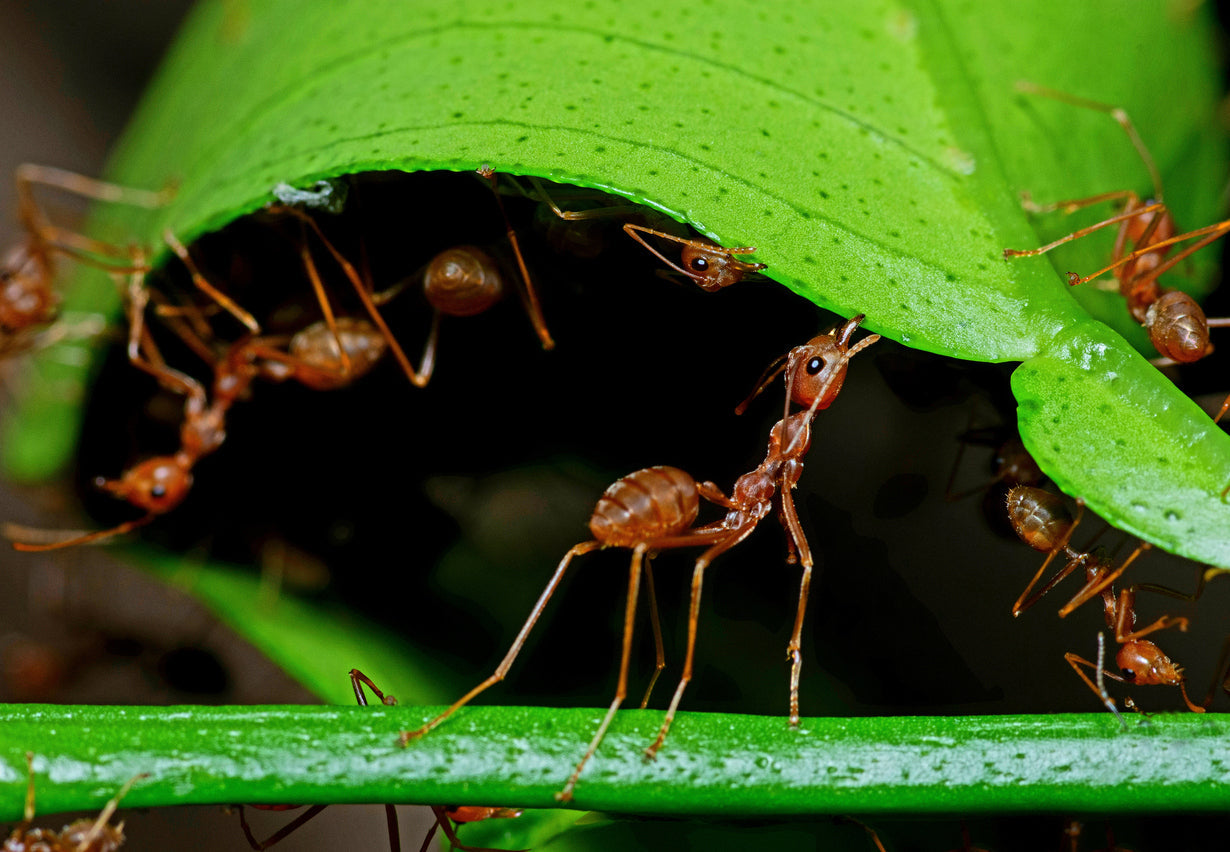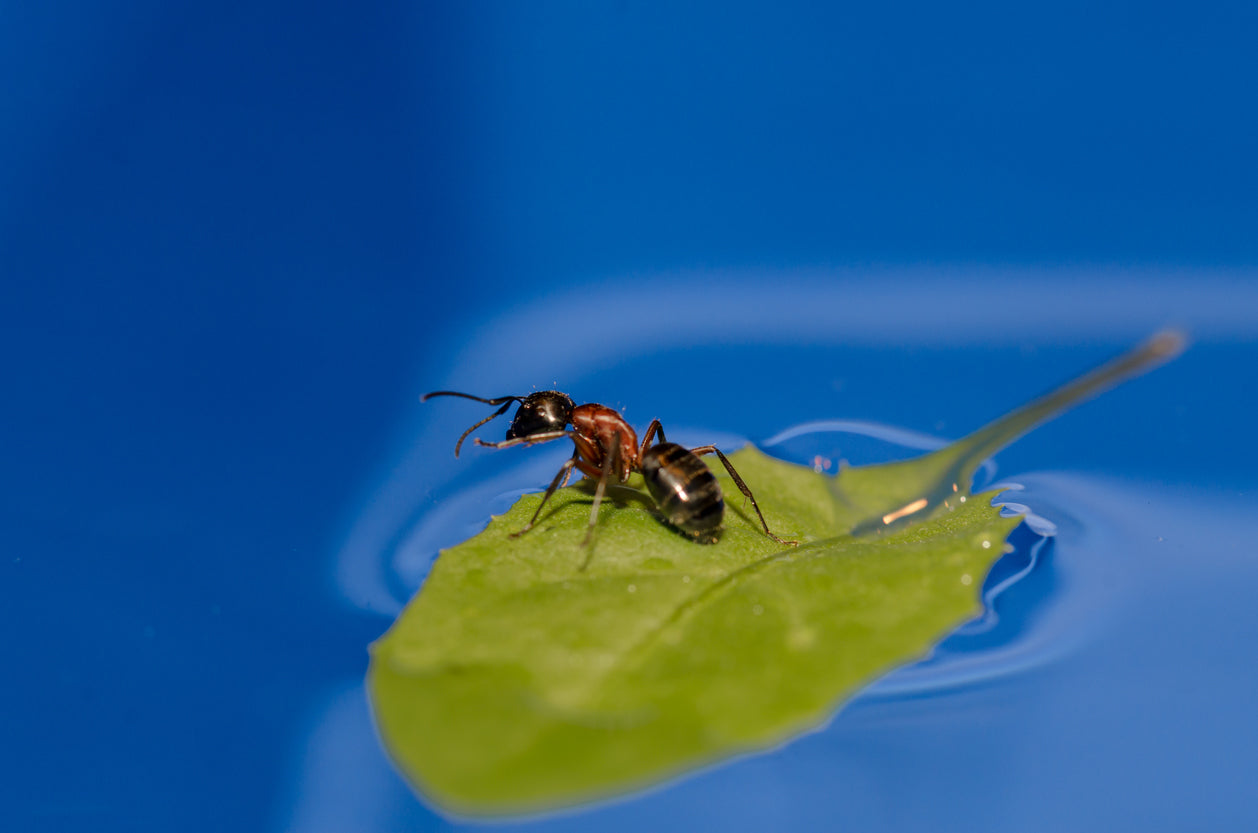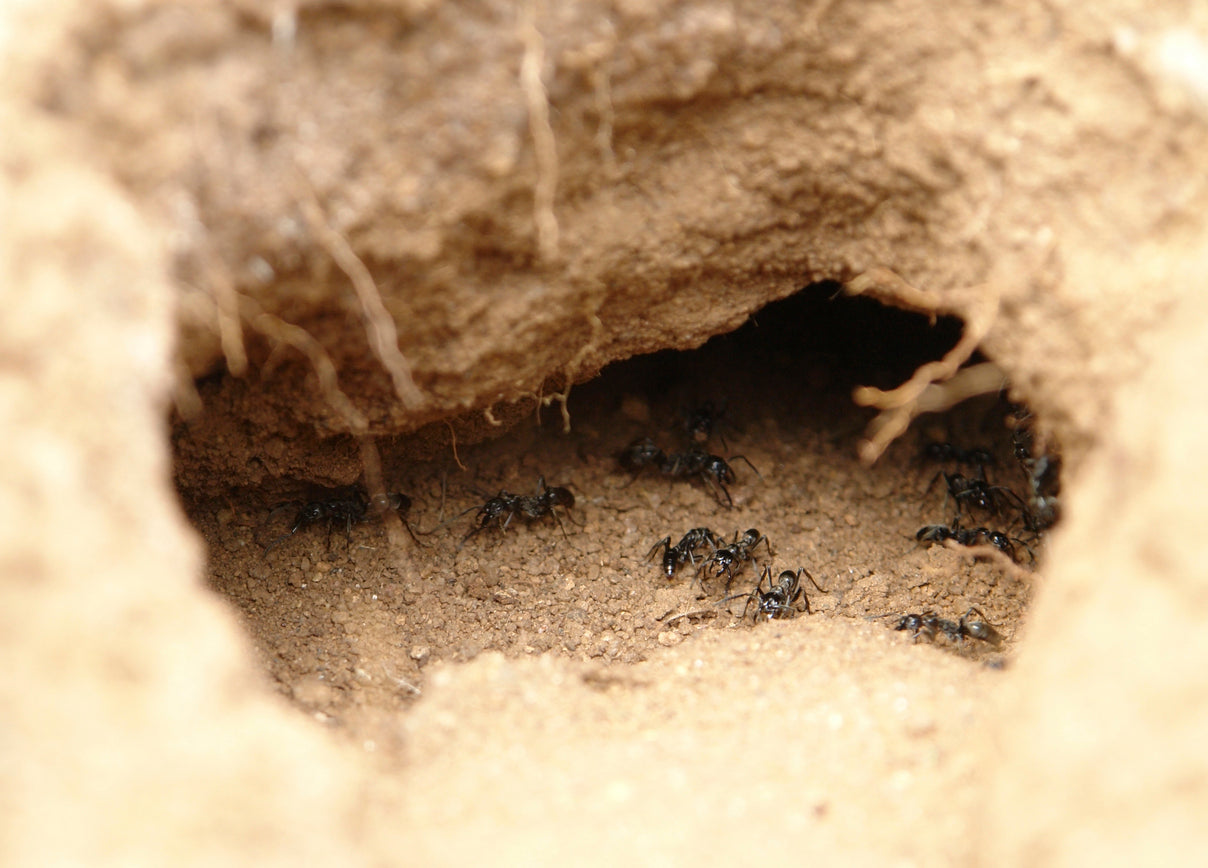Add description, images, menus and links to your mega menu
A column with no settings can be used as a spacer
Link to your collections, sales and even external links
Add up to five columns
Add description, images, menus and links to your mega menu
A column with no settings can be used as a spacer
Link to your collections, sales and even external links
Add up to five columns

Ant Lore: Size, Strength and Intelligence
By Spencer McManamna October 10, 2024 5 min read
Ants may be minuscule, but there's more to these social insects than meets the eye! In this article, you'll learn all about the unique skills and hidden characteristics of ants, and the strange and thought-provoking contrasts between their size, their strength and their intelligence, both individual and colony-wide!
Ant Size
Ants belong to the family Formicidae and are classified within the order Hymenoptera, which also includes bees and wasps. There are more than 12,000 known species of ants, varying wildy in size between species. The smallest ants, such as the tiny Thief Ant (Solenopsis molesta), measure around 1.5 millimeters in length, while the largest, like the Queen Driver Ant (Dorylus gregarius), can reach lengths of up to 5 centimeters or more.
When comparing the largest and smallest ant species, significant differences emerge in their habitats, behaviors, and roles within their ecosystems. The smallest ants often thrive in microhabitats and are adept at navigating through small crevices, while larger ants tend to establish colonies that can dominate their environments, often exhibiting aggressive foraging and territorial behaviors. The reproductive strategies of these species also differ as larger ants may have more complex social structures and roles within their colonies, whereas smaller ants can be highly specialized and efficient in their foraging and nesting behaviors.
Ant Strength
Ants exhibit incredible strength relative to their own size, capable of lifting objects many times their own body weight, up to 50 times in some species! This extraordinary strength is due to their muscle structure and the mechanics of their exoskeletons, allowing them to perform tasks that seem wildly disproportionate to their small stature. This contrast highlights their efficiency as social insects, enabling them to work collectively and variedly to transport food, build nests, and defend their colonies.
How Strong Are Ants?
Ants possess a unique physical structure that allows them to withstand significant pressure, up to 5,000 times their own body weight! This is primarily due to their exoskeleton, which is made of a tough, chitinous material. This exoskeleton provides not only protection but also structural support, distributing weight and pressure evenly across the body. The segmented nature of their bodies enhances flexibility, enabling ants to absorb impacts without sustaining injury. The design of their joints and legs allows for effective weight distribution and movement, further enhancing their resilience under pressure.
The mechanical functionality of an ant's body is complemented by its size, as smaller creatures experience greater strength-to-weight ratios. This means that when an ant encounters pressure—whether from carrying heavy objects or being stepped on—it can often withstand forces that would be detrimental to larger organisms. The combination of a robust exoskeleton, flexible joints, and an efficient muscular system enables ants to thrive in diverse environments while performing tasks that require significant strength and durability.
How Much Can Ants Lift?
Ants are famous for their impressive lifting power, which enables them to carry objects many times their own body weight. This ability is important for tasks such as foraging for food, transporting resources back to their colonies, and constructing or maintaining their nests. During foraging expeditions, ants often lift and carry food items such as seeds or insects back to their nests to support the colony.
Ants also utilize their lifting strength in collaborative efforts, such as forming living bridges with their bodies to traverse gaps or obstacles. By linking together, they can create temporary structures that allow their fellow ant friends to cross difficult terrain, showcasing their teamwork and collective strength. This adaptability in lifting and moving not only aids in their survival but also highlights the remarkable efficiency of ant colonies as complex social organisms.
Do Ants Have Muscles?
An ant’s muscular system is intricately designed to support its diverse range of movements and activities. Unlike vertebrates, ants possess an exoskeleton that serves as both their skeleton and a point of attachment for muscles, forming a skeletomuscular system. This system consists of powerful muscle fibers that contract to facilitate movement, allowing ants to perform tasks such as walking, climbing, and manipulating objects with precision and strength.
The mandibles of ants are particularly unique, equipped with strong muscles that enable them to perform a variety of functions such as cutting, carrying, and even fighting! These muscles are specialized and highly developed, allowing for rapid and powerful movements. The complex and fine-tuned coordination between the mandible muscle fibers and the skeletal structure enables ants to grasp and manipulate objects effectively, making them efficient foragers and builders. This muscular efficiency is a vital factor in their survival on both an individual and colonial level, enabling them to collaborate and thrive in complex environments.
Ant Intelligence
Ant intelligence is a fascinating cross between instinctual behaviors and collective thinking. While many of their actions are driven by innate instincts, such as foraging, nest building, and defense, ants also have remarkable capacity for learning and memory. Through experiences and interactions within their colonies, ant behavior adapts based on environmental cues, enabling them to solve problems and improve efficiency in tasks like food gathering and community protection.
Collective thinking, or swarm intelligence, further enhances ant capabilities as individual ants contribute to a larger group effort that often exceeds the sum of its parts. As an example, when ants forage they can use pheromones to communicate the location of food sources, creating trails that others can follow. This collaborative behavior is not only instinctual but also reflects a form of social learning, where younger ants pick up cues from older, more experienced members of the colony.
How Smart Are Ants?
Intelligent behavior in ant colonies is clear in their sophisticated communication and navigation strategies. Ants primarily communicate through pheromones, chemical signals that convey information about food sources, danger, and colony tasks. For example, when a forager discovers a food source, it releases a pheromone trail back to the nest which other ants follow. This system not only efficiently directs workers to food but also allows the colony to adapt its foraging strategies based on the strength and duration of the pheromone signal.
In addition to chemical communication, ants display remarkable navigation skills. They use visual landmarks and pheromone trails to orient themselves, allowing them to efficiently return to their nests from foraging sites. Some species even exhibit the ability to count steps, using their movement as a cue for distance traveled.
Ant Brain Size
Ant brains are remarkably small compared to those of humans, weighing in at just a fraction of a gram and measuring only about the size of a poppy seed. In contrast, a human brain weighs approximately 1,400 grams and is much larger in volume and complexity. Despite their tiny size, ant brains are highly efficient, containing around 250,000 to 1 million neurons, depending on the species. This neuronal count is significantly lower than the approximately 86 billion neurons found in the human brain.
The compactness of an ant's brain allows for specialized adaptations that enable ants to perform complex behaviors and social tasks. The dense packing of neurons facilitates rapid processing of information, allowing ants to respond quickly to environmental changes, navigate their surroundings, and communicate effectively with their colony. This proves that even tiny brains can support intricate social structures and complex behaviors!
Explore the Fascinating World of Insects with Insect Lore
Your adventure in the hidden world of ants continues! Explore our Ant Habitat Kits here!
Related products
Also in Ants

What Ants Can Teach Us About Working Together
March 19, 2025 6 min read
Just as ants collaborate, relying on communication and coordination to complete complex tasks, humans thrive when working together, each individual bringing unique skills and perspectives to the table. In this article you will learn all about how ants work together, and what it can teach us about teamwork!

How Long Can Ants Live Without Food?
November 04, 2024 4 min read
You may know about the wide variety of foods ants like to munch on, but have you ever wondered how long they can go without a meal? The answer may surprise you! If you've got an appetite to learn more, let's dig in.

Ant Hills, Nests, and Tunnel Systems
November 04, 2024 6 min read
Can you dig it? One of the ant's most fascinating qualities is their ability to work together to create elaborate tunnel communities. But have you ever wondered how this process starts, and how they're able to create such structures? Read on to discover how our tiny friends are able to make such BIG habitats!

Enter Your Voucher Code Below
If you are experiencing difficulty redeeming your voucher on your desktop, please use a mobile device for a better redeeming experience.

We are unable to combine redemption fees. If you are redeeming 1-5 voucher codes, please complete separate purchases through our website for each voucher. If you are redeeming 6+ vouchers, please email us at customerservice@insectlore.com with your voucher codes and shipping address and we'll send you a custom invoice for payment.
Thank you for Redeeming your voucher!
You redeemed a $title

Don't miss this special one Time Offer.
Check the Box to Add this Special Offer to your Cart

Don't miss this special one Time Offer.
Check the Box to Add this Special Offer to your Cart
It looks like you are an Insect Lore UK/EU customer! You are visiting the Insect Lore USA website.
Click Insect Lore UK/EU website to be redirected to insectlore.co.uk.




